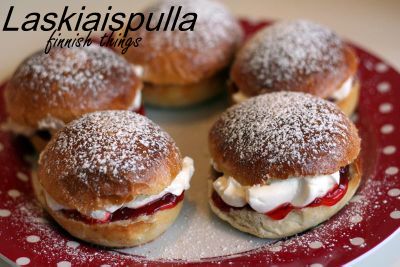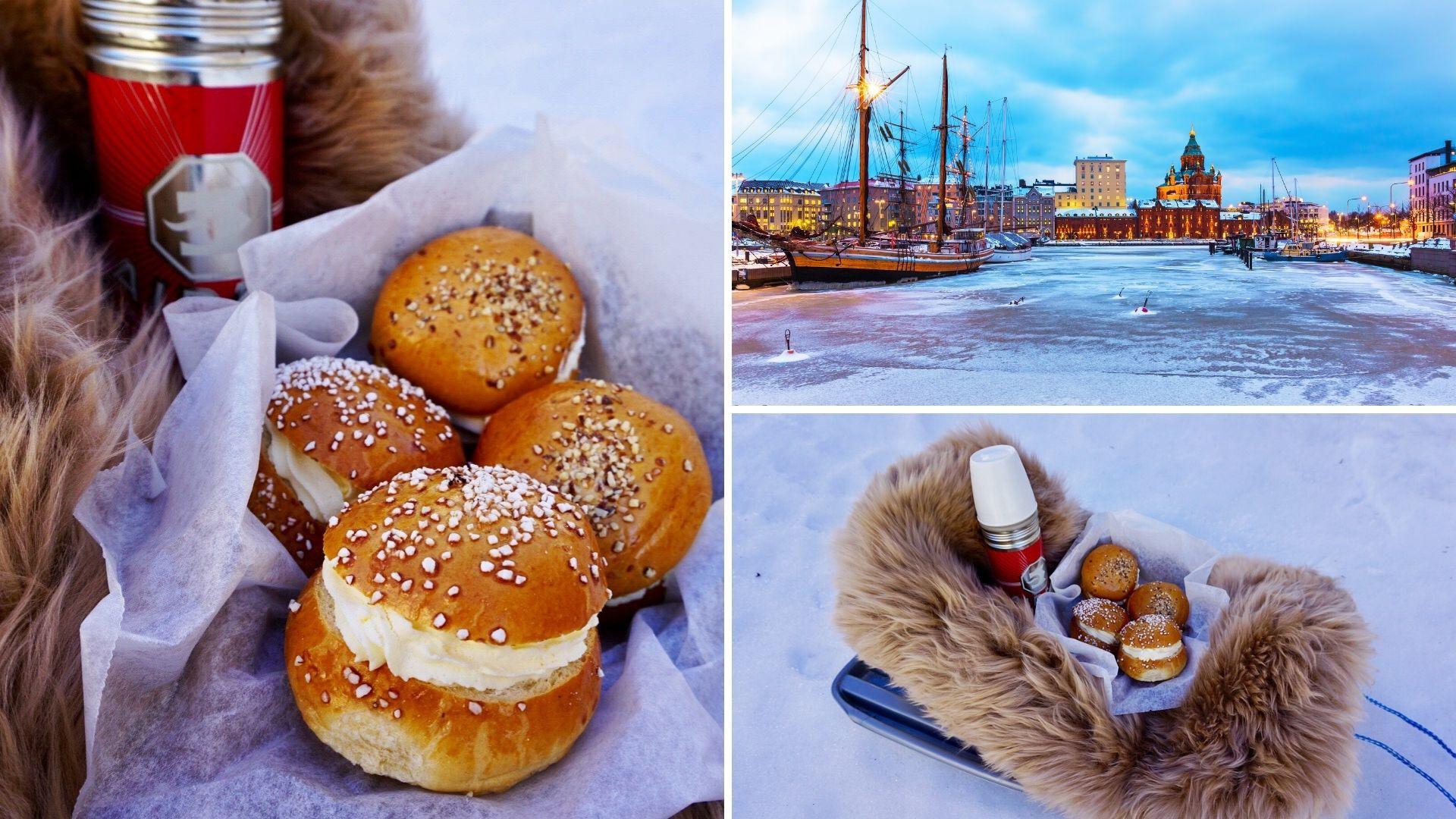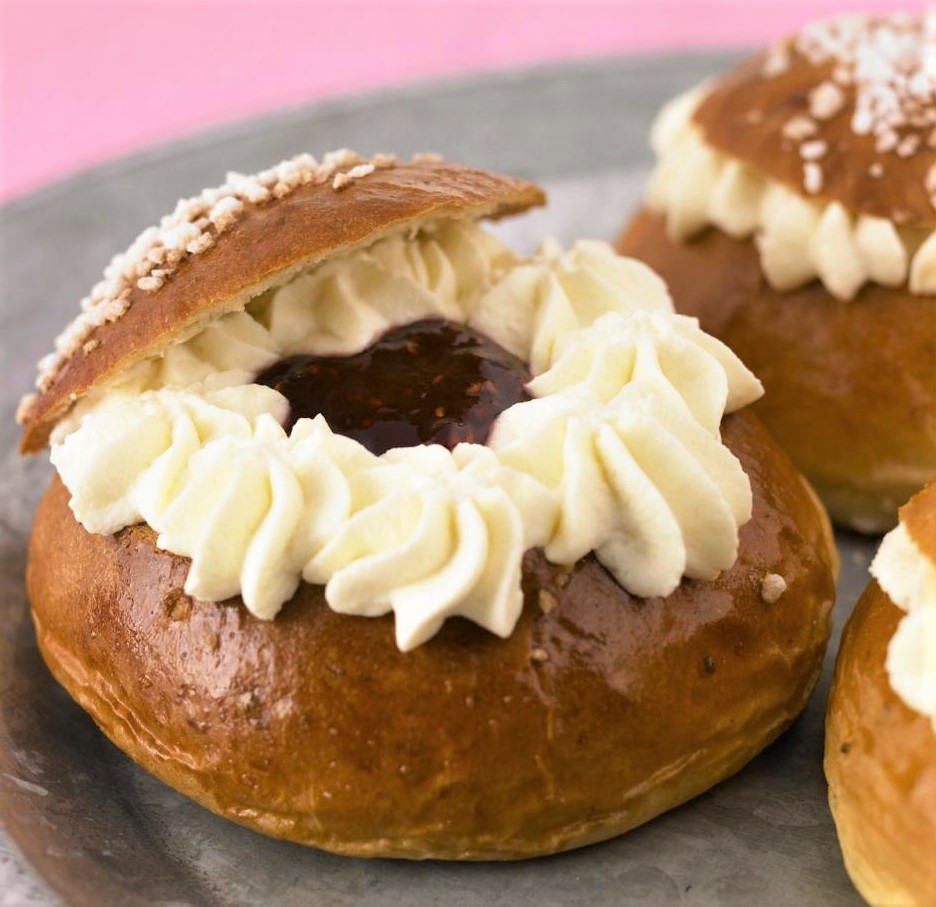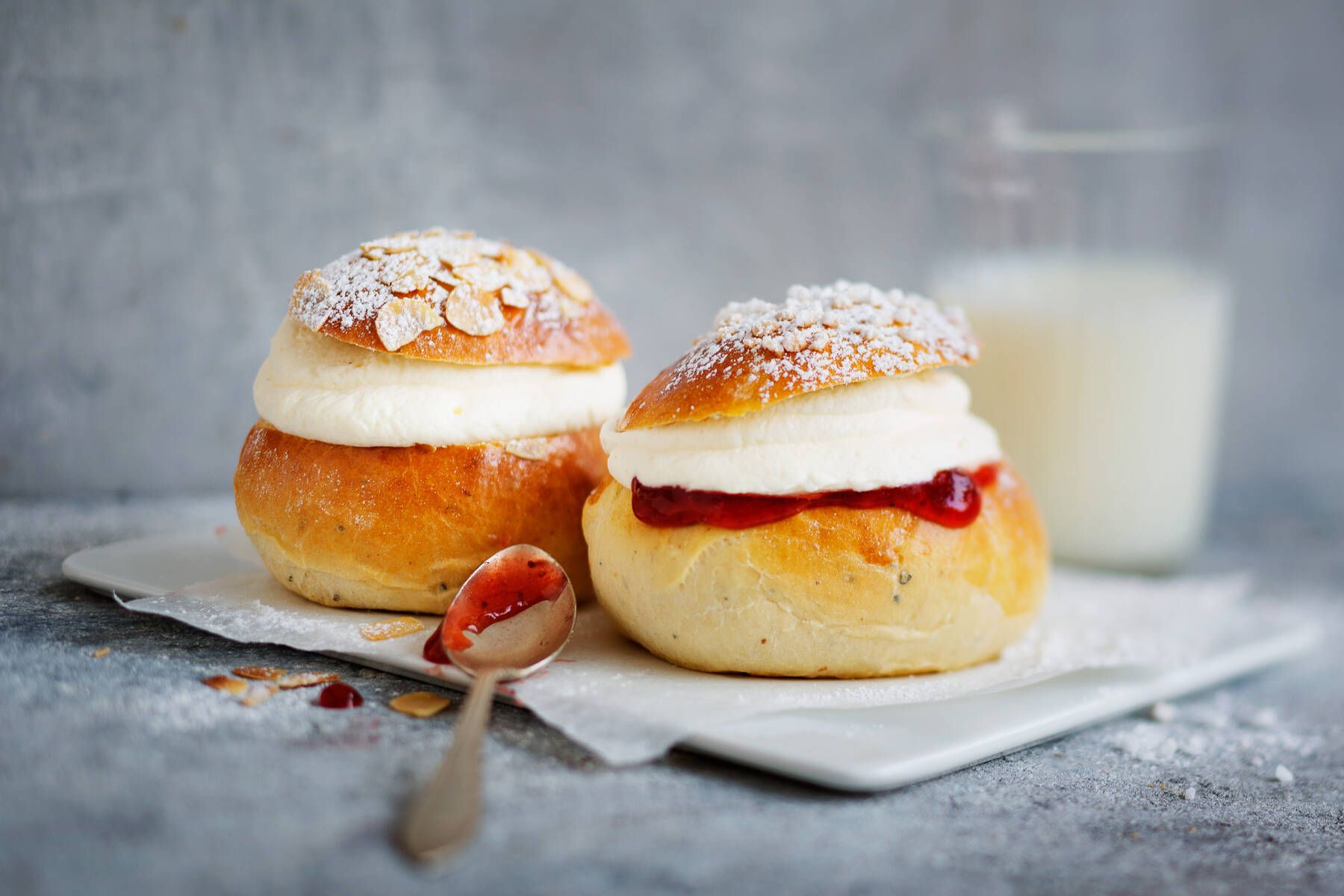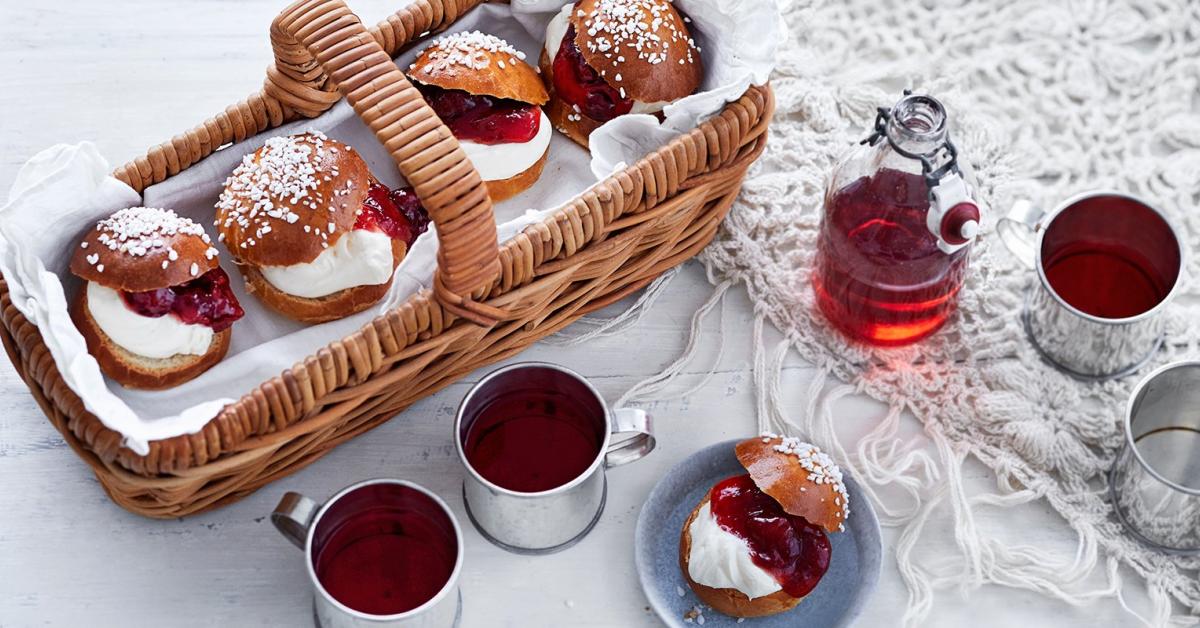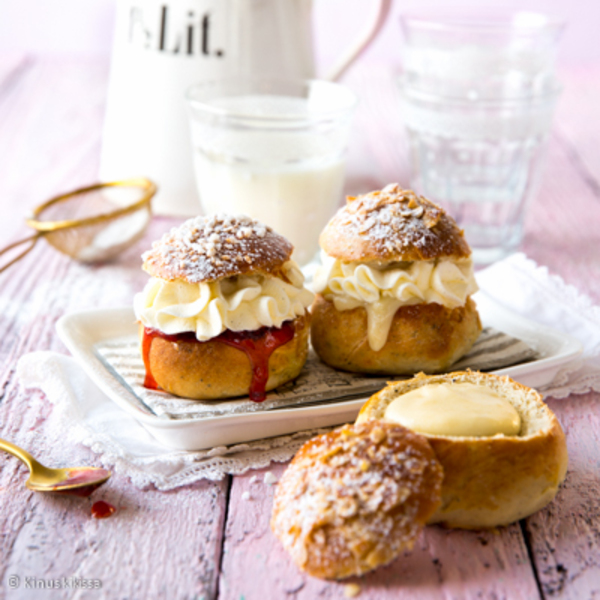Semlor
semla, laskiaispulla, fastlagsbulle
A semla, vastlakukkel, laskiaispulla, Swedish eclair, fastlagsbulle/fastelavnsbolle or vēja kūkas is a traditional sweet roll made in various forms in Sweden, Finland, Estonia, Denmark, the Faroe Islands, Iceland, Norway, and Latvia, associated with Lent and especially Shrove Tuesday in most countries, Shrove Monday in Denmark, parts of southern Sweden, Iceland and Faroe Islands or Sunday of Fastelavn in Norway. In Sweden it is most commonly known as just semla , but is also known as fettisdagsbulle, lit. 'Fat Tuesday bun' or 'Shrove Tuesday bun'. In the southern parts of Sweden, as well as in Swedish-speaking Finland, it is known as fastlagsbulle (plural: fastlagsbullar; semla on the other hand means a plain wheat bun with butter, called bulle in Swedish). In Poland it is known as ptyś. In Estonia it is called vastlakukkel. In Norway and Denmark it is called fastelavnsbolle. In Iceland, it is known as a bolla and served on Bolludagur. In Faroe Islands it is called Føstulávintsbolli, and is served on Føstulávintsmánadagur. In Latvia, it is called vēja kūkas. Semla served in a bowl of hot milk is hetvägg. The name semla (plural: semlor) is a loan word from Middle Low German semmel, originally deriving from the Latin simila, meaning 'flour', itself a borrowing from Greek σεμίδαλις (semidalis), which was the name used for the finest quality wheat flour. In the southernmost part of Sweden (Scania) and by the Swedish-speaking population in Finland, they are known as fastlagsbulle. In Denmark and Norway they are known as fastelavnsbolle (fastlagen and fastelavn being the equivalent of Shrove Tuesday). In Scanian, the feast is also called fastelann. In Finnish they are known as laskiaispulla (which refers to the Finnish laskiainen), in Latvian as vēja kūkas, and in Estonian as vastlakukkel. Today, the Swedish-Finnish semla consists of a cardamom-spiced wheat bun which has its top cut off, and is then filled with a mix of milk and almond paste, topped with whipped cream. The cut-off top serves as a lid and is dusted with powdered sugar. Today it is often eaten on its own, with coffee or tea. Some prefer to eat it in a bowl of hot milk.
Source: Wikipedia
Recipes


